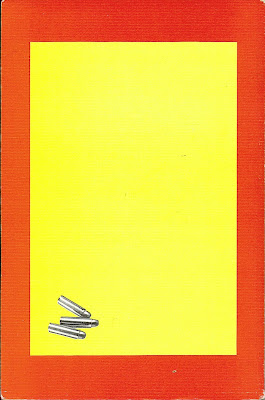 This is Bukowski's last novel, but the first one that I read. I remember seeing it out on a table at The Strand and being drawn to the striking cover. I'd heard of Charles Bukowski, though I didn't know much about him, but I decided to check it out.
This is Bukowski's last novel, but the first one that I read. I remember seeing it out on a table at The Strand and being drawn to the striking cover. I'd heard of Charles Bukowski, though I didn't know much about him, but I decided to check it out.
Pulp is a strange introduction to his work—definitely not characteristic of the bulk of his novels and stories. It's more of an homage to classic detective fiction like Dashiell Hammett or Raymond Chandler, with quite a few literary references—the main character, Nick Belane, is asked to find the author Celine, whom Bukowski has called "the greatest writer of the last 2,000 years"; he's also hired by a man named John Barton to find the Red Sparrow (undoubtedly a salute to his Black Sparrow publisher John Martin), and visited by two thugs named Dante and Fante (after Dante Alighieri and John Fante). Bukowski died shortly after writing this book so perhaps this was his idea of a farewell and salute to his literary heroes.
 I don't actually remember much about reading it but I certainly liked it enough to keep reading more of his books. But maybe it's not generally the best place to start.
I don't actually remember much about reading it but I certainly liked it enough to keep reading more of his books. But maybe it's not generally the best place to start.
 I'm pretty excited about this new zine from Nigel Peake. The title translates to "Billboard constructions for a French town," and while there is no accompanying text or introduction, it seems to be a collection of line drawings of imagined signage in an imagined French town.
I'm pretty excited about this new zine from Nigel Peake. The title translates to "Billboard constructions for a French town," and while there is no accompanying text or introduction, it seems to be a collection of line drawings of imagined signage in an imagined French town. The concept and execution are fantastic. The drawings are copied onto pastel colored papers, with a solid black cover and stitched spine.
The concept and execution are fantastic. The drawings are copied onto pastel colored papers, with a solid black cover and stitched spine. I especially love the more fanciful signs. I'd love to see a giant hat on the side of the road somewhere, in France or otherwise.
I especially love the more fanciful signs. I'd love to see a giant hat on the side of the road somewhere, in France or otherwise.
















